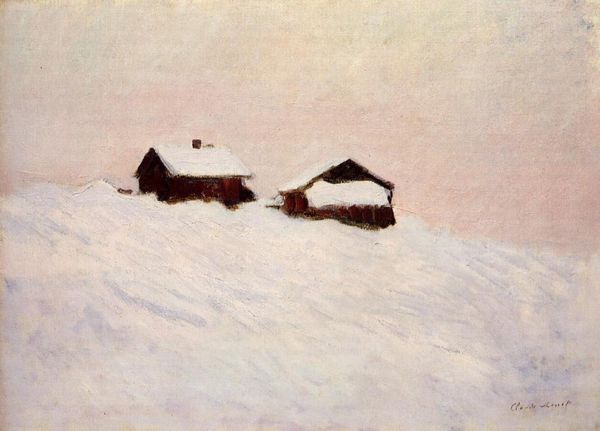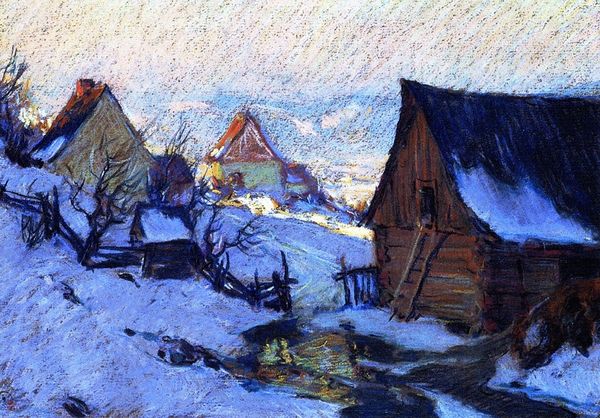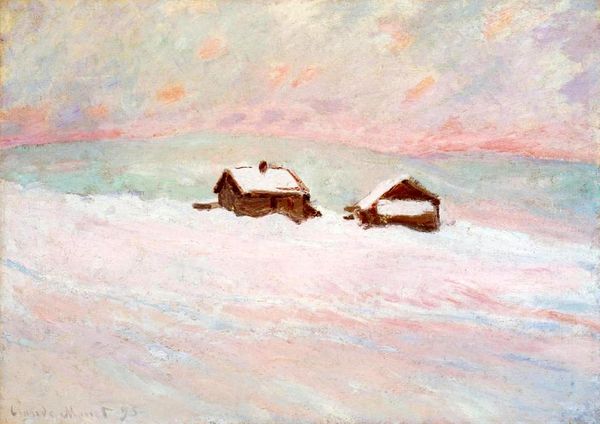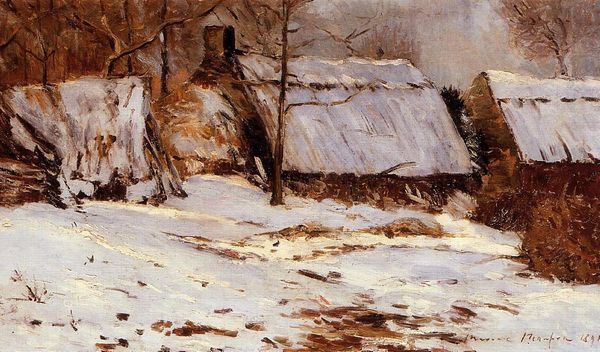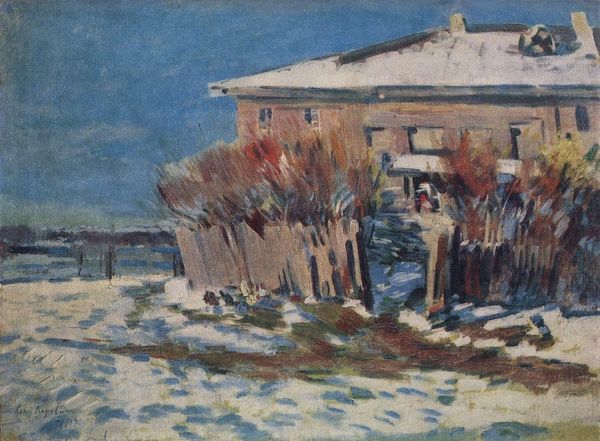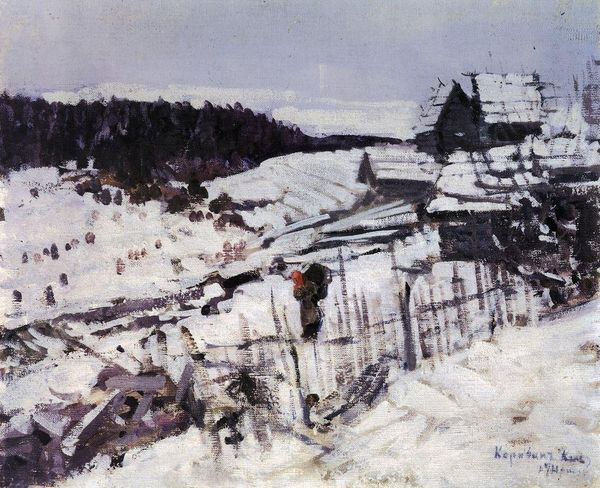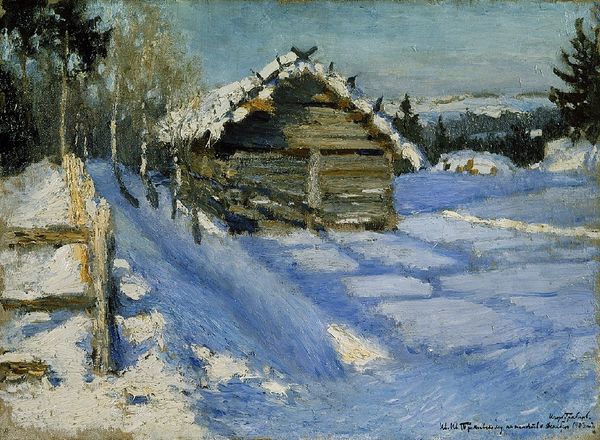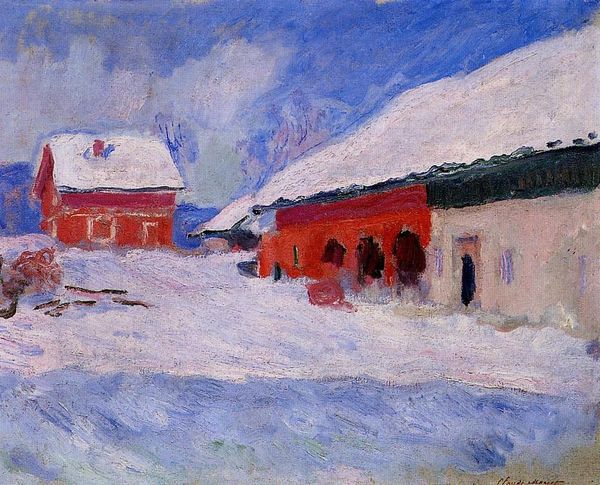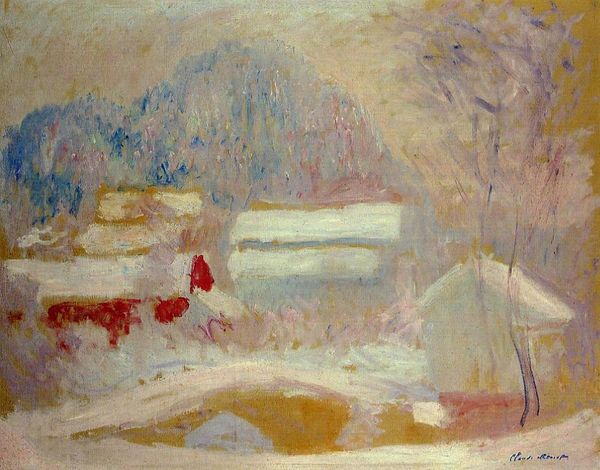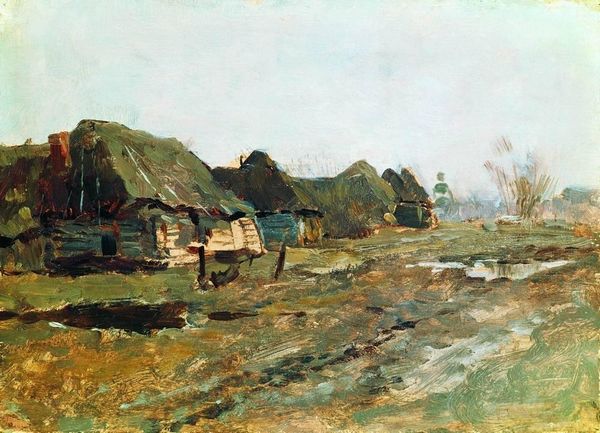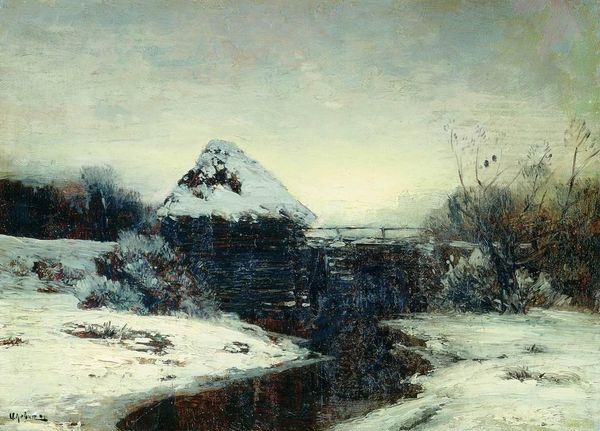
#
abstract painting
#
rough brush stroke
#
incomplete sketchy
#
winter
#
house
#
charcoal drawing
#
possibly oil pastel
#
oil painting
#
acrylic on canvas
#
underpainting
#
charcoal
#
watercolor
#
building
Copyright: Public domain
Editor: This is "Winter in Lapland," painted in 1894 by Konstantin Korovin, and it's currently housed at the Tretyakov Gallery in Moscow. The thing that strikes me is how raw and immediate it feels; almost like a sketch done en plein air. What elements stand out to you? Curator: Considering the period and the artist’s Impressionistic leanings, let's examine the materiality here. What kind of labor went into building those cabins, crafting those logs by hand? How does the painting, also a product of labor, speak to that? Editor: I guess the rough, almost hurried, brushstrokes contrast with the deliberate work of building those log cabins. The painting captures a fleeting moment, but the structures imply sustained effort. Curator: Precisely! Think about the social context. Lapland was a remote region. These aren't grand estates. What does it suggest about the lives and the labor of those who inhabited these buildings, this landscape, and Korovin's act of representing it? And consider the distribution and consumption of the artwork itself – for whom was this painting made, and how does its intended audience shape our understanding? Editor: So you're saying the painting becomes a commodity representing a specific kind of labor and lifestyle in a faraway place for perhaps a more urban or wealthy audience? The artist’s own labor plays into that system of representation, of course. Curator: Exactly. It’s a layering of labors, represented and then consumed. And even the act of applying paint—the material itself—becomes a form of work in this interpretation. Think also of the pigments available to Korovin: were they locally sourced, or part of a larger system of trade and extraction? Editor: It’s interesting to think of the painting as more than just a landscape, but a record, however incomplete, of human interaction with the environment, expressed through the artist’s own work and the consumer's interpretation. Curator: And through those raw brushstrokes and material presence, the labor within, too. It makes me consider not just what’s *in* the painting, but what went *into* making it, and who ultimately consumes its image.
Comments
No comments
Be the first to comment and join the conversation on the ultimate creative platform.
